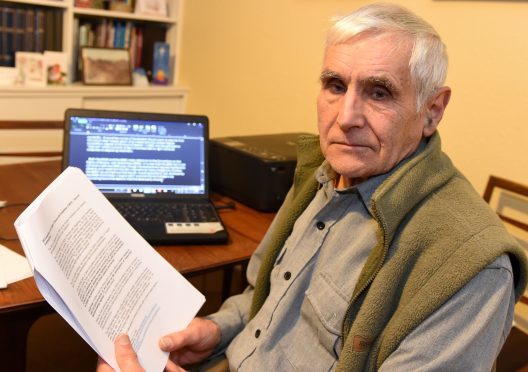Hiding drugs in the meals of care home residents could soon be made illegal as an Aberdeen campaigner’s 20-year crusade nears completion.
Under present rules, carers are able to conceal anti-psychotic medicine in the food and drink of patients as a means of keeping them sedate.
Retired lecturer Hunter Watson has branded it a “disgraceful” human rights breach, and his plea for change will be heard by the Scottish Parliament this week.
His campaign was sparked after his mother was admitted to a care home with dementia, and was secretly drugged by staff.
On Thursday, the Holyrood Public Petitions Committee will look at Mr Watson’s call for a “wide review” into mental health legislation.
He said: “I’m greatly concerned by what goes on in care homes.
“That people can be medicated against their will, and without their knowledge, is an absolute disgrace and goes against their human rights.”
The petition has received backing from the Mental Welfare Commission for Scotland and Scottish Human Rights Commission, which has given Mr Watson more hope that legislation will be brought in outlawing the practice.
He also believes people should be allowed to make “advance decisions”, while they have the mental capacity to, on the type of treatment they wish to receive in later life.
“I should be able to make the decision that, if ever I am in care home, then I must not have drugs concealed in my food and drink,” the 82-year-old added.
“If that becomes law, then I can ensure that doesn’t happen to me.”
A spokesman for the Mental Welfare Commission for Scotland said: “We agree that, in the next three to five years, there should be a coherent, systematic and thorough process to review the legal framework in Scotland for non-consensual care and treatment, to ensure it remains effective and in line with developing human rights standards.”
The Scottish Human Rights Commission has also offered support, noting concerns around “covert medication, chemical restraint and forcible treatment”.
Mental health minister Maureen Watt stressed that the current system is compatible with human rights laws, but a review is underway into how it can be improved.
She said: “The Scottish Government is committed to creating a modern, inclusive Scotland which protects, respects and realises internationally recognised human rights.”
